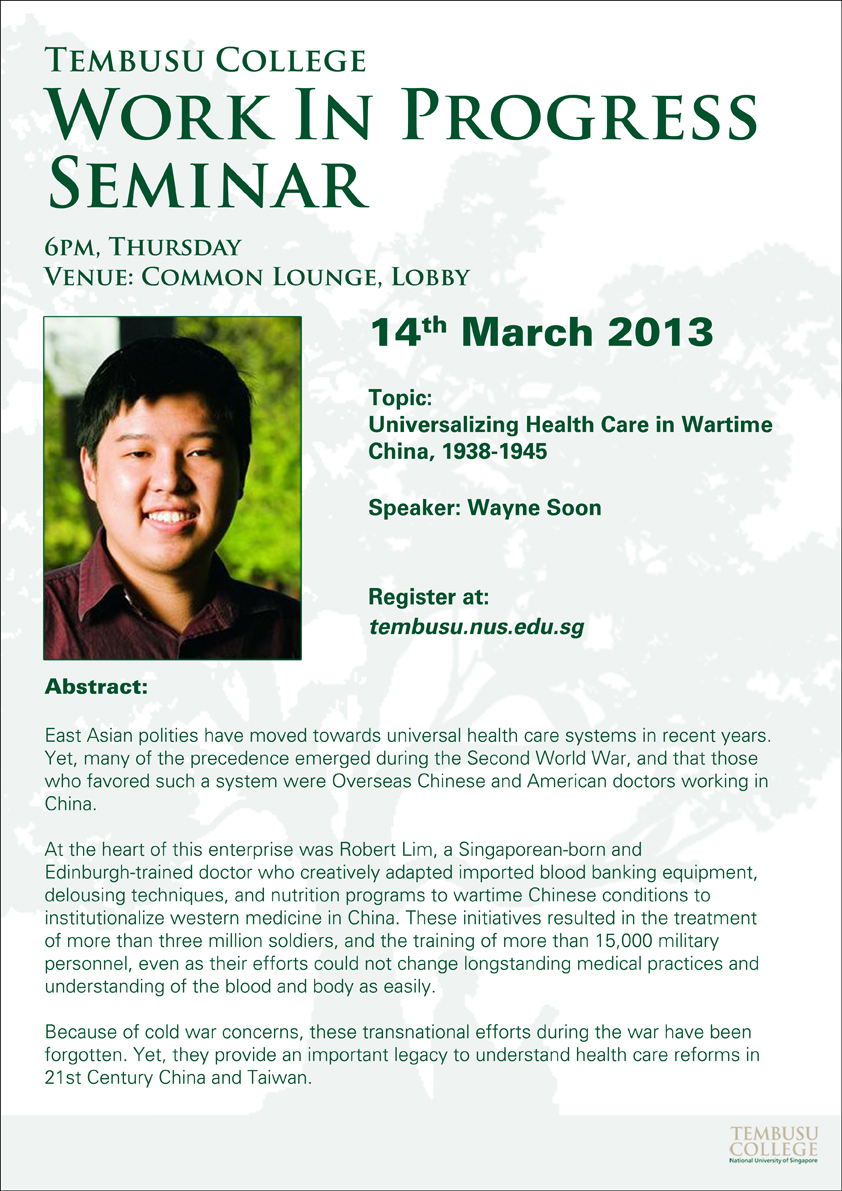
Tembusu College Work In Progress Seminar
6PM, Thursday
Venue: Common Lounge, Lobby
14th March 2013
Topic: Universalizing Health Care in Wartime China, 1938-1945
Speaker: Wayne Soon
Register at: dev-tembusu-nus.pantheonsite.io
Abstract:
East Asian polities have moved towards universal health care systems in recent years. Yet, many of the precedence emerged during the Second World War, and that those who favored such a system were Overseas Chinese and American doctors working in China.
At the heart of this enterprise was Robert Lim, a Singaporean-born and Edinburgh-trained doctor who creatively adapted imported blood banking equipment, delousing techniques, and nutrition programs to wartime Chinese conditions to institutionalize western medicine in China. These initiatives resulted in the treatment of more than three million soldiers, and the training of more than 15,000 military personnel, even as their efforts could not change longstanding medical practices and understanding of the blood and body as easily.
Because of cold war concerns, these transnational efforts during the war have been forgotten. Yet, they provide an important legacy to understand health care reforms in 21st Century China and Taiwan.


